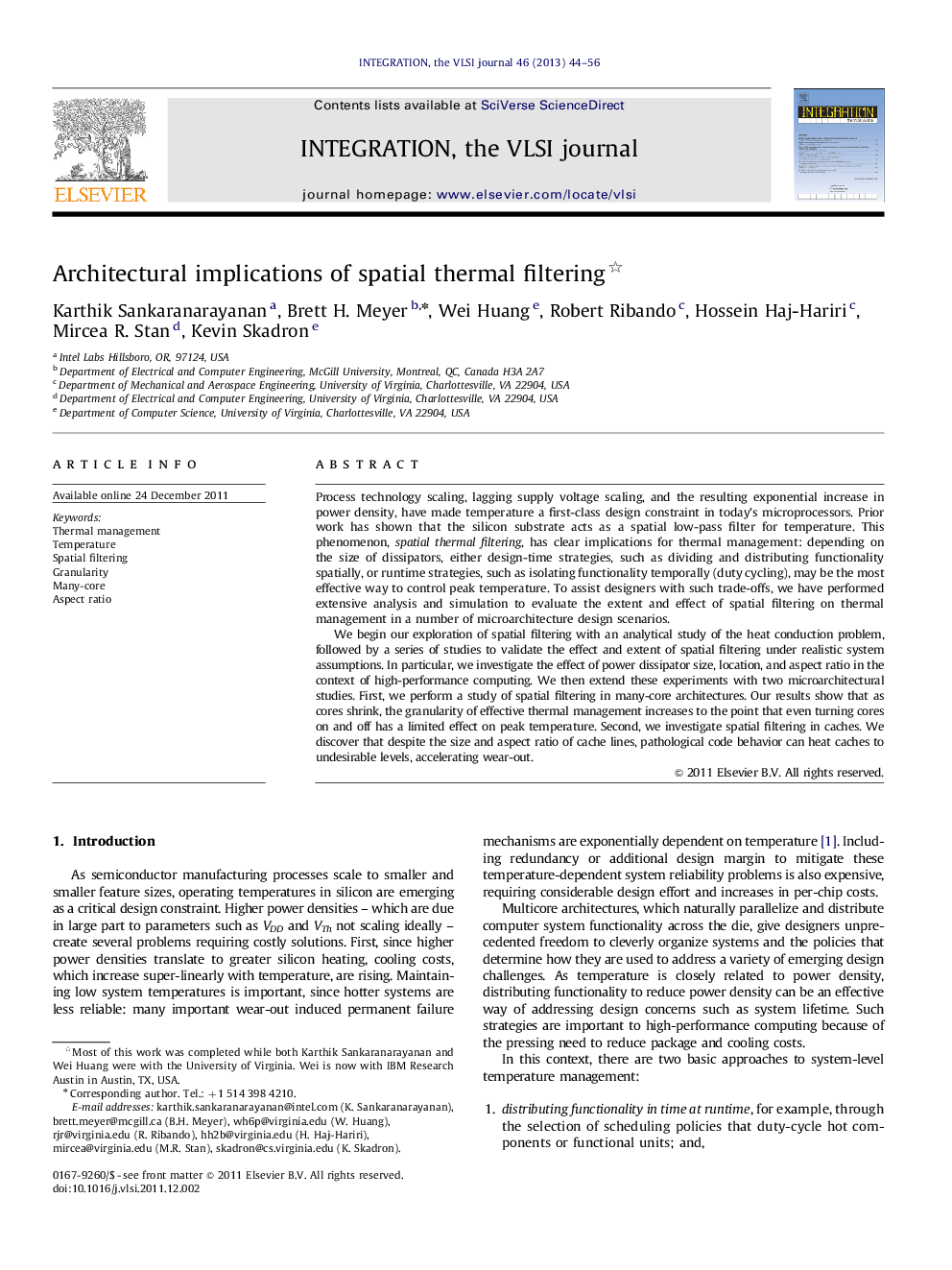| کد مقاله | کد نشریه | سال انتشار | مقاله انگلیسی | نسخه تمام متن |
|---|---|---|---|---|
| 539834 | 871274 | 2013 | 13 صفحه PDF | دانلود رایگان |

Process technology scaling, lagging supply voltage scaling, and the resulting exponential increase in power density, have made temperature a first-class design constraint in today's microprocessors. Prior work has shown that the silicon substrate acts as a spatial low-pass filter for temperature. This phenomenon, spatial thermal filtering, has clear implications for thermal management: depending on the size of dissipators, either design-time strategies, such as dividing and distributing functionality spatially, or runtime strategies, such as isolating functionality temporally (duty cycling), may be the most effective way to control peak temperature. To assist designers with such trade-offs, we have performed extensive analysis and simulation to evaluate the extent and effect of spatial filtering on thermal management in a number of microarchitecture design scenarios.We begin our exploration of spatial filtering with an analytical study of the heat conduction problem, followed by a series of studies to validate the effect and extent of spatial filtering under realistic system assumptions. In particular, we investigate the effect of power dissipator size, location, and aspect ratio in the context of high-performance computing. We then extend these experiments with two microarchitectural studies. First, we perform a study of spatial filtering in many-core architectures. Our results show that as cores shrink, the granularity of effective thermal management increases to the point that even turning cores on and off has a limited effect on peak temperature. Second, we investigate spatial filtering in caches. We discover that despite the size and aspect ratio of cache lines, pathological code behavior can heat caches to undesirable levels, accelerating wear-out.
Journal: Integration, the VLSI Journal - Volume 46, Issue 1, January 2013, Pages 44–56